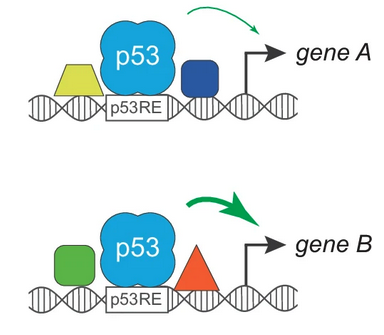Abstract
The extent to which transcription factors read and respond to specific information content within short DNA sequences remains an important question that the tumor suppressor p53 is helping us answer. We discuss recent insights into how local information content at p53 binding sites might control modes of p53 target gene activation and cell fate decisions. Significant prior work has yielded data supporting two potential models of how p53 determines cell fate through its target genes: a selective target gene binding and activation model and a p53 level threshold model. Both of these models largely revolve around an analogy of whether p53 is acting in a “smart” or “dumb” manner. Here, we synthesize recent and past studies on p53 decoding of DNA sequence, chromatin context, and cellular signaling cascades to elicit variable cell fates critical in human development, homeostasis, and disease.
